

Angus MacKenzie
2026 Aston Martin Valhalla review: Prototype drive
4 Days Ago
The Jeep Compass is handsome, and it's a huge step forward from the first-generation car. But there's better value to be found in the range than the S-Limited – and in rival line-ups.
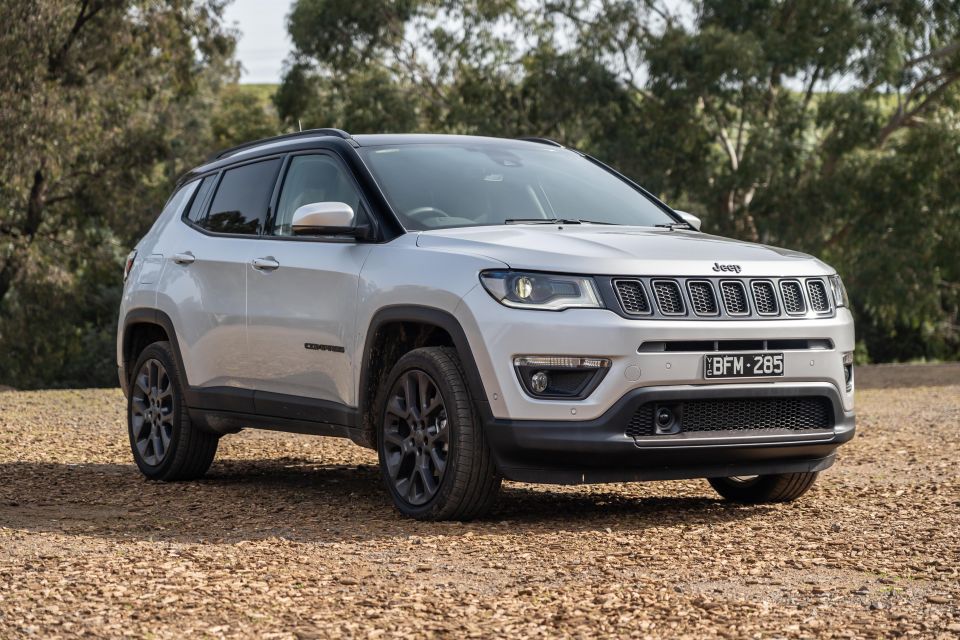
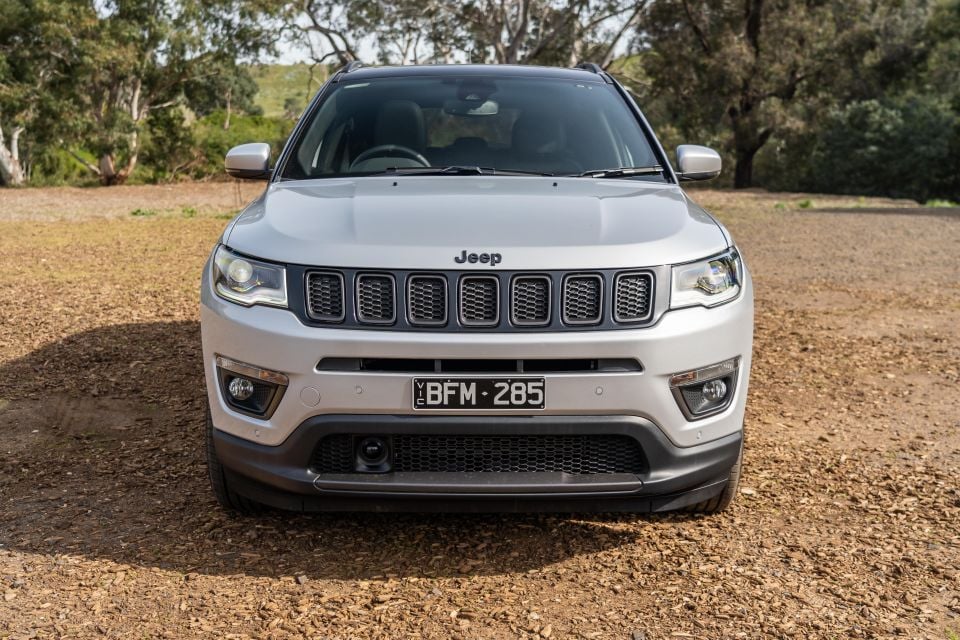

Contributor
New from
$28,850
excl. on-roads

Contributor
New from
$28,850
excl. on-roads


Contributor
New from
$28,850
excl. on-roads

Contributor
New from
$28,850
excl. on-roads
Quickly see how this car stacks up against its competition. Select any benchmark to see more details.
Where expert car reviews meet expert car buying – CarExpert gives you trusted advice, personalised service and real savings on your next new car.
The rough, tough Wrangler and Gladiator might be the face of Jeep, but the Compass is arguably a more important car – it’s Jeep’s best-selling model globally.
On paper it faces off with the Kia Seltos, Subaru XV, Volkswagen T-Roc, and Mazda CX-30 one of the country’s most competitive segments, so there’s no shortage of buyers searching for something just like it.
However, it’s also bigger than those rivals, edging it towards the Hyundai Tucson and Kia Sportage dimensionally. Jeep has confirmed it’s working to have it classified alongside the Tucson, Sportage, Mazda CX-5, and Toyota RAV4 in the mid-sized SUV class.
With a full suite of safety features and more standard equipment, Jeep is hoping those buyers will, erm, reorient their shopping lists to include the Compass.
Designed in the USA and built in India, the second-generation Compass is miles removed from its predecessor. It’s built on a variation of the chassis from the Renegade, and is even offered with plug-in hybrid power overseas.
How does the Compass S-Limited stack up?
Pricing for the Compass range kicks off at $36,950 before on-road costs for the front-wheel drive Night Eagle, jumping to $42,950 before on-roads for the all-wheel drive Limited and $45,950 before on-roads for the S-Limited on test here.
The range-topping Trailhawk starts at $49,450 before on-road costs.


Standard equipment in the Compass includes an 8.4-inch infotainment system with Apple CarPlay, Android Auto, and factory satellite navigation, along with a reversing camera.
The whole range gets dual-zone climate control, ambient lighting, a leather-wrapped steering wheel and shifter on the inside, backed by niceties such as privacy glass, power-folding exterior mirrors, automatic headlights, and rain-sensing wipers.
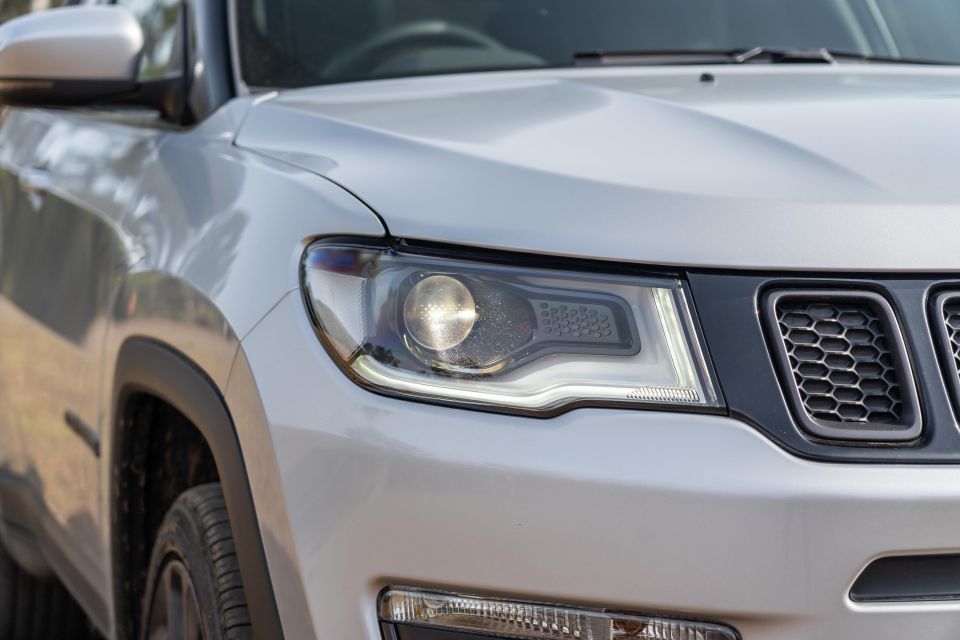
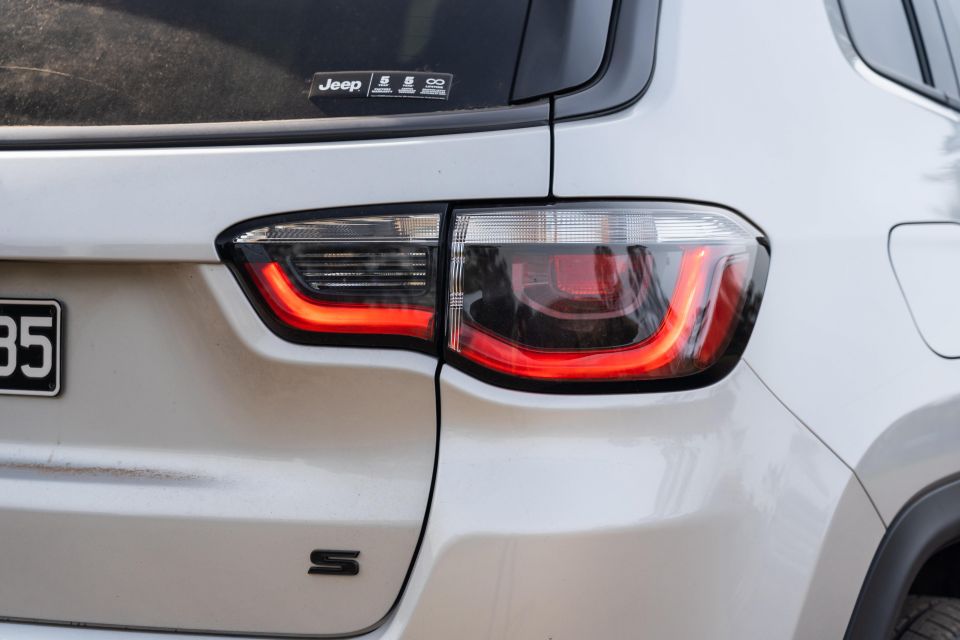
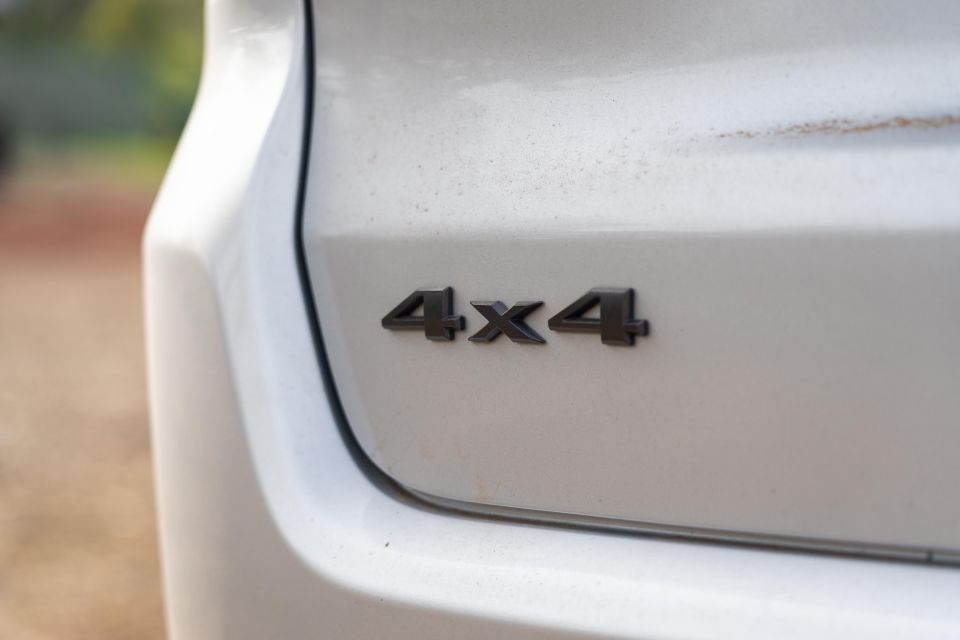
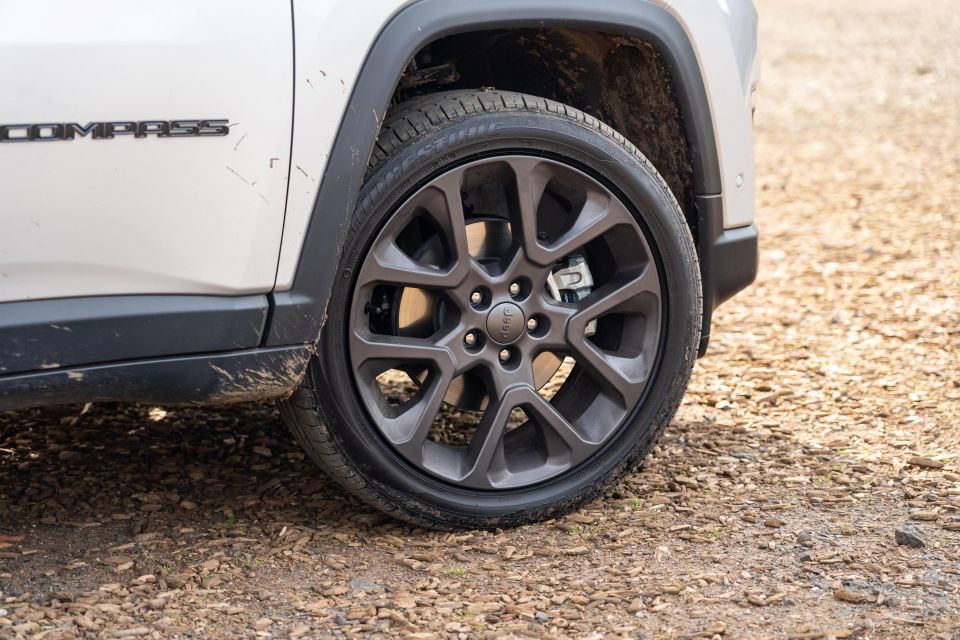
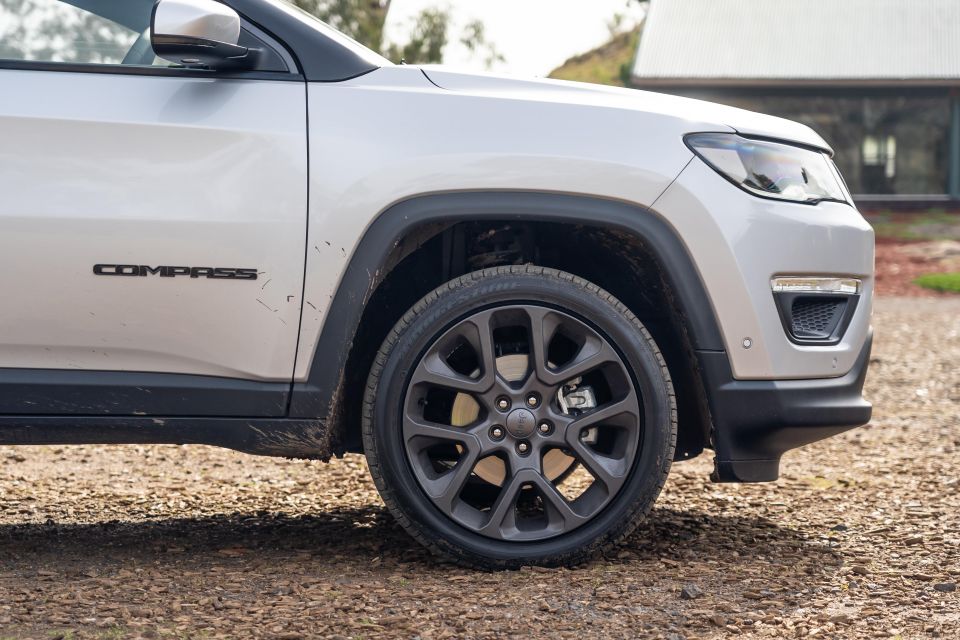
Moving up to the Limited gets you leather upholstery and heated front seats, complete with eight-way power adjustment for the driver. The rear parking sensors are joined by front sensors, the standard cruise control is subbed for adaptive cruise with stop/go, and the tailgate is powered.
There’s also semi-autonomous parking assist, keyless entry and start, a 7.0-inch display in the instrument binnacle, and bi-xenon headlights.
Finally, the S-Limited on test here gets 19-inch alloy wheels and a panoramic sunroof.
The Compass received a rating of five stars when it was tested by ANCAP in 2017.
That rating was based on a frontal offset score of 14.93 out of 16 and a side impact score of 16 out of 16. Whiplash and pedestrian protection were both rated as ‘Good’.
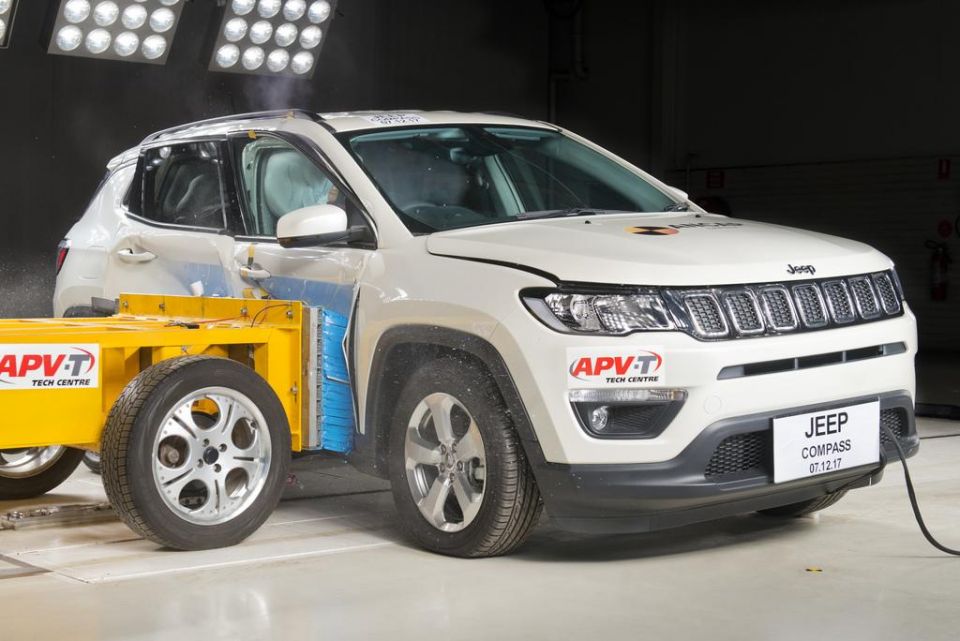
The whole Compass range comes standard with autonomous emergency braking and forward-collision warning, as well as lane-departure warning, lane-keeping assist, blind-spot monitoring, and rear cross-traffic alert.
All models also have anti-lock brakes as well as front, front-side and curtain airbags, plus a driver’s knee inflator.
Solidly put together with excellent tech, let down by some frustrating quirks.
Starting with the good, the Compass mostly feels well put together. There are no squeaks or rattles, and the dashboard, door trims, and central armrest are all finished in materials with varying degrees of squishiness.
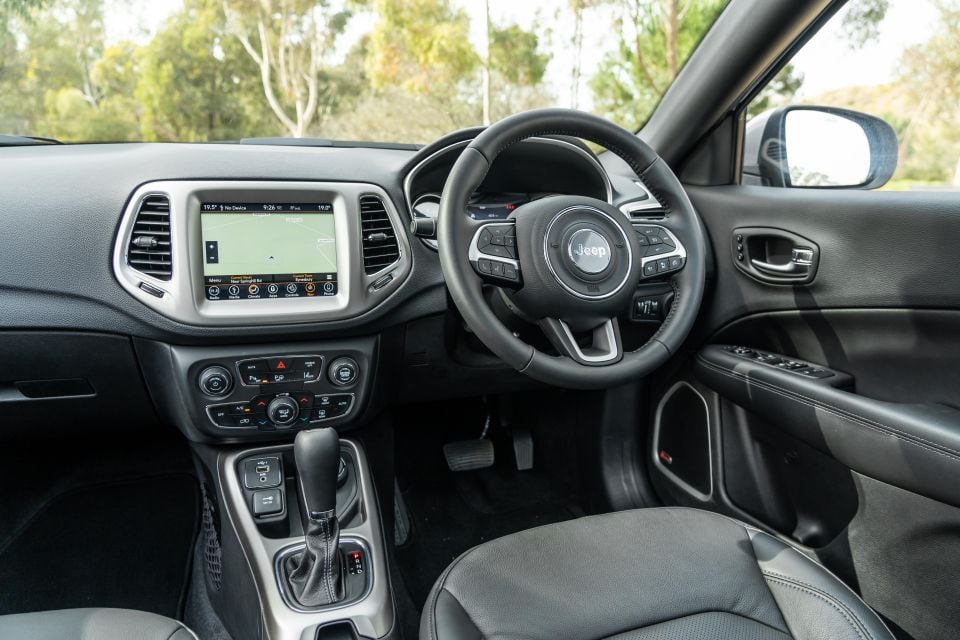
The indicator stalk is made of brittle, cheap plastic though, and its movement couldn’t be further removed from the satisfying, well-damped paragon of mass-produced competence hiding behind the steering wheel of Volkswagen Group products.
Fiat Chrysler has infotainment nailed. UConnect is among the best mainstream systems out there, with simple graphics and intuitive menus on its 8.4-inch touchscreen.
The fact the heated seat button is present on the startup screen so you can get your buns roasting immediately on cold mornings is clever, as is the fact Jeep allows you to control the climate through the display or using physical buttons and dials.
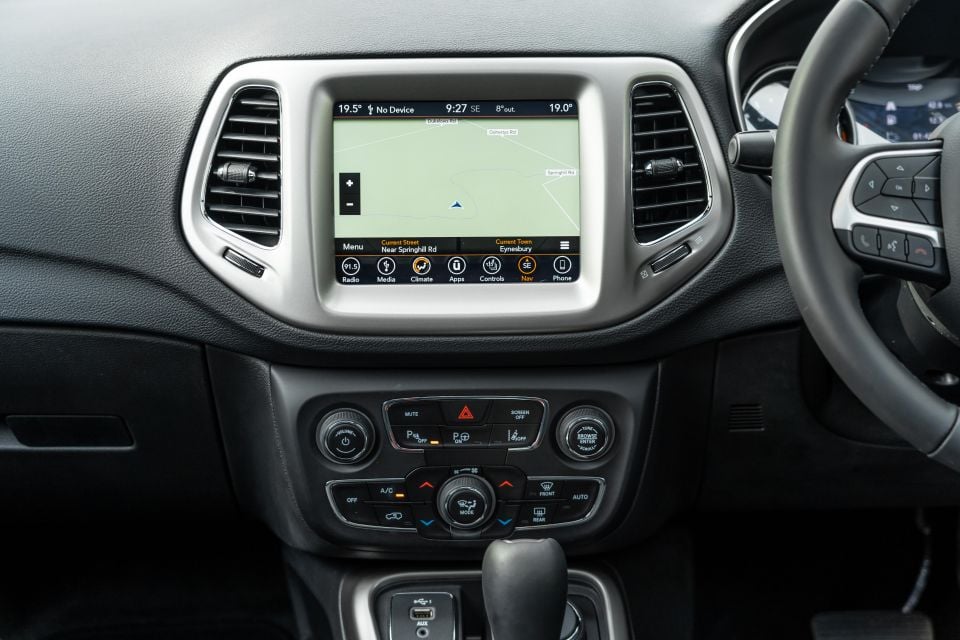
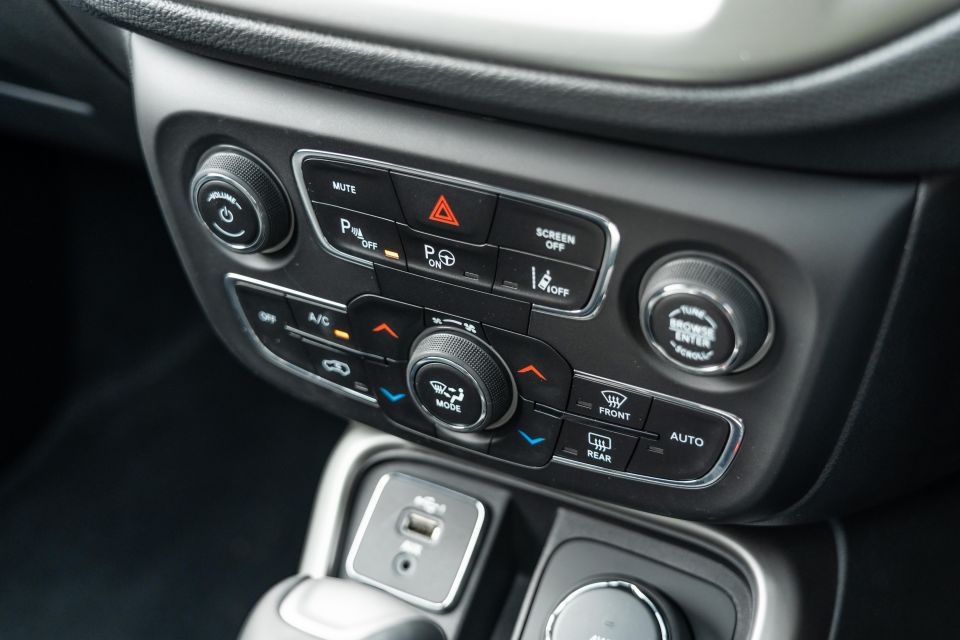
Although the inbuilt satellite navigation is fine, Apple CarPlay and Android Auto are still better options if you’ve got phone reception.
The driver is faced with a 7.0-inch trip computer nestled between two simple analogue dials, and the (chunky) steering wheel is wrapped in what feels like quality leather. So far, so good.
Unfortunately, the seat is set too high and doesn’t stretch far enough back for longer-legged drivers, and there was no way to stop the chubby headrest poking into the base of my neck. Raising the headrest all the way and heavily reclining the seat helped, but it didn’t fix the problem.
I know six-foot-seven isn’t exactly average height, but it’s a problem I’ve never experienced anywhere else. It’s inexcusable, and would instantly see the Compass struck from my shopping list. None of the Jeep’s competitors struggle to accomodate lanky drivers up front.
There’s a distinct lack of storage, too. The transmission tunnel has two cupholders, but the area under the dash is eaten up by the four-wheel drive mode switch and USB connector, so there’s no secure phone-sized space – let alone wireless charging.
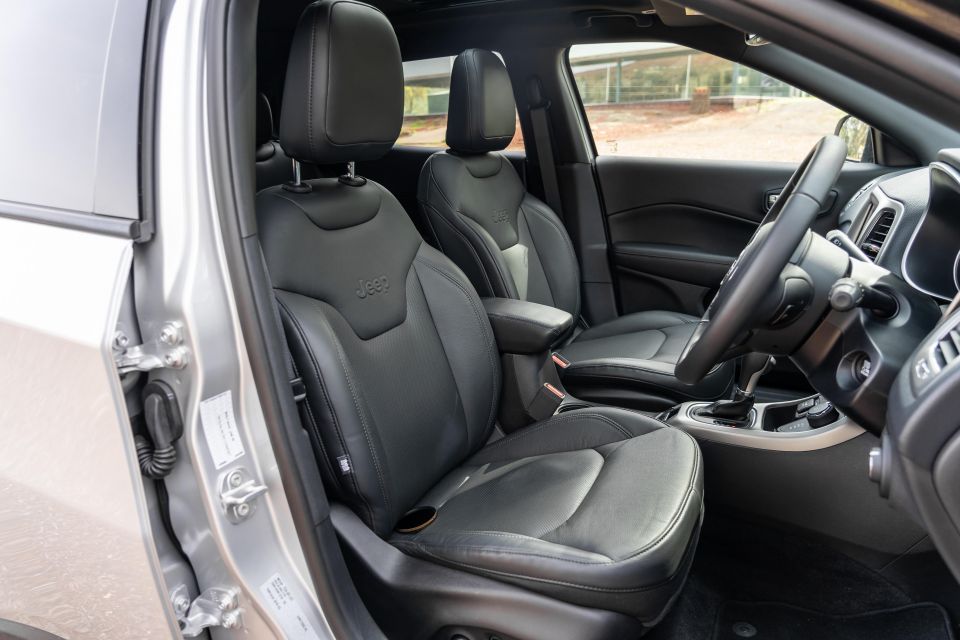
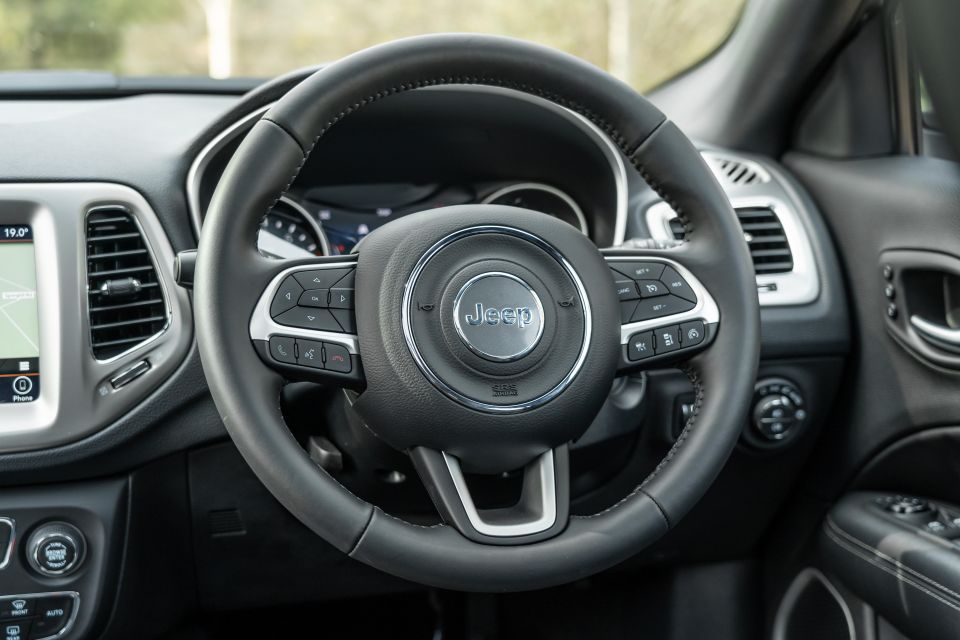
The storage bin under the armrest is small, too. The storage bin hidden under the passenger seat base is neat, and a handy place to hide a laptop or tablet when you’re parked, but it’s also not much use while you’re driving if the seat is occupied.
Rear seat space is par for the class, with acceptable legroom and headroom for average-sized adults sitting behind average-sized adults. There’s a fold-down central armrest, but there’s no plastic ski port or barrier behind it.
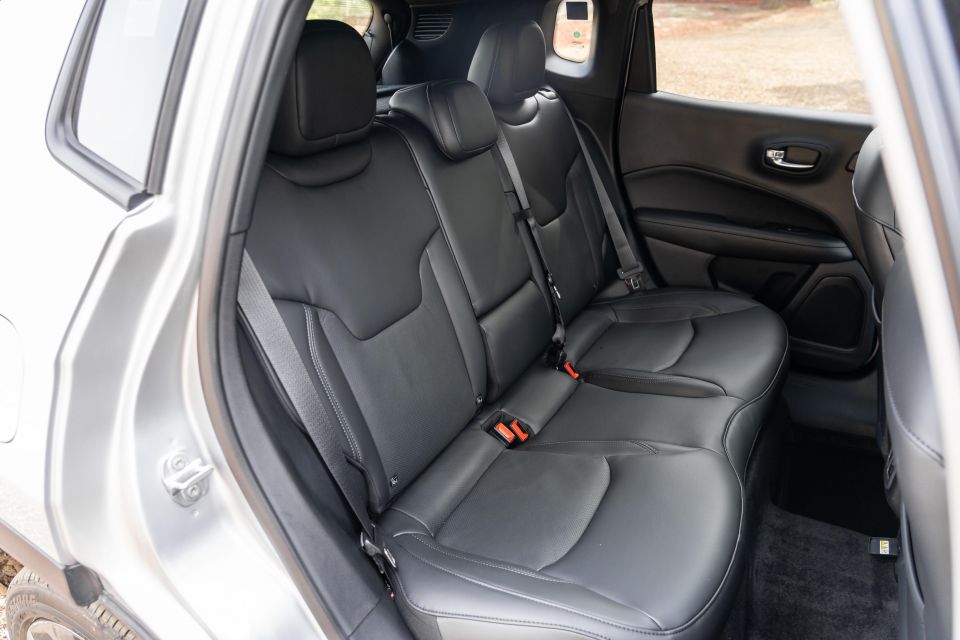

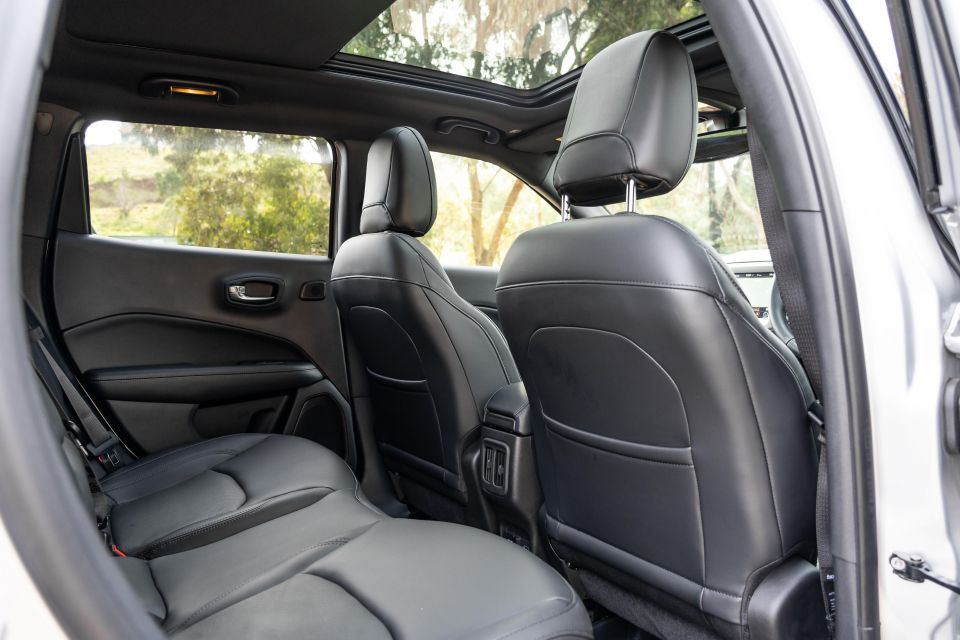
That means if the kids want somewhere to put a cup or rest their arms, there’s nothing stopping loose items in the boot shooting into the cabin.
Jeep gives rear-seat passengers air vents, a USB port, and a 230V power outlet, which are nice touches.
With its $46,000 price tag the S-Limited doesn’t only go up against the Seltos and CX-30. That money will also buy you a mid- to high-range Mazda CX-5 or Toyota RAV4, the latter of which has more head- and legroom than than the Compass.
They’re also wider, which means two chunky child seats or three passengers will more comfortably fit across the second row.
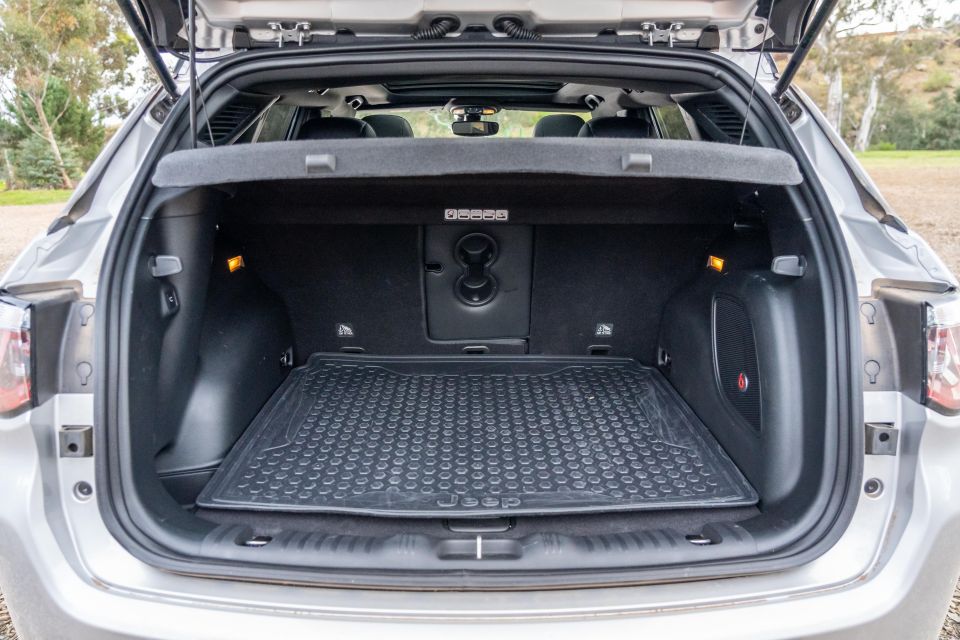
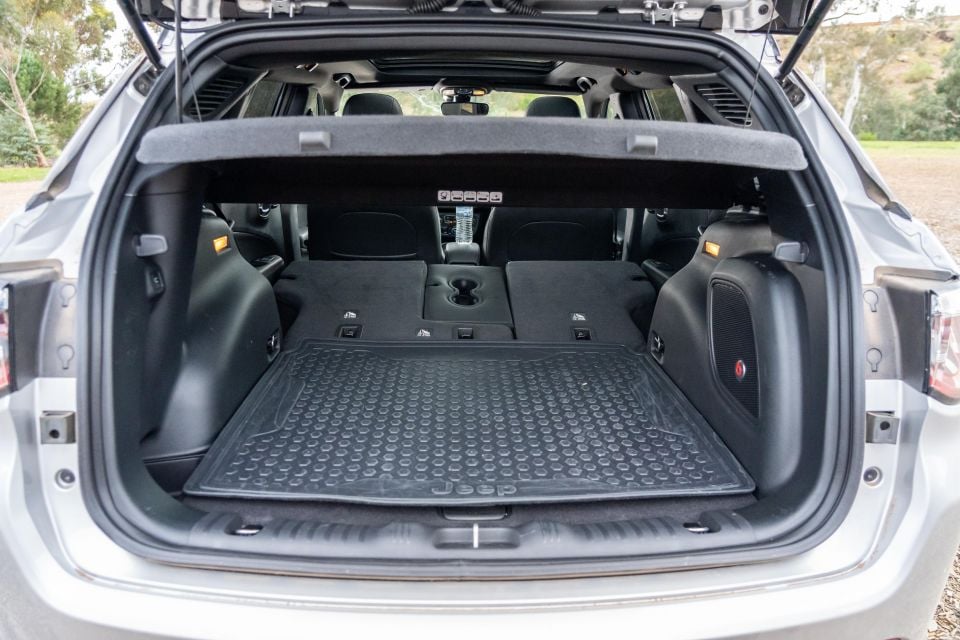
Boot space is 438L with the rear seats in place, putting it near the top of the class. There’s a powered tailgate and 60/40 split-folding rear seats, too.
But Jeep has managed to engineer in some weirdness. The luggage cover is incredibly fiddly to remove with the rear seats in place because of its scalloped shape, and the button for the power-closing tailgate isn’t on the tailgate itself, it’s set low on the left-hand side of the boot area.
Not only does that mean you need to duck under the boot lid and reach in to close it, it means the button can be hidden by a fully-loaded boot.
Power in the Compass comes from a naturally-aspirated 2.4-litre four-cylinder petrol engine with 129kW of power and 229Nm of torque.
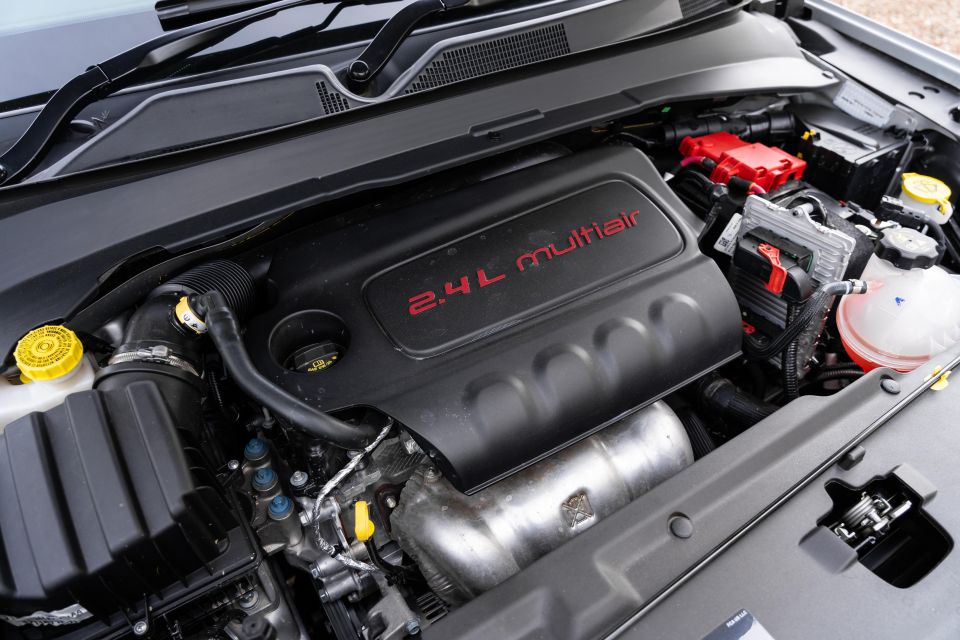
Although the front-wheel drive Night Eagle only gets a six-speed automatic, higher-spec all-wheel drive models get a nine-speeder.
Jeep says the 0-100km/h sprint takes 10.1 seconds from standstill. Claimed fuel economy is 9.7L/100km on the combined cycle, but we saw north of 12.0L/100km in a mix of city and highway driving.
With a 2.4-litre engine and nine-speed transmission, the Compass isn’t short on displacement or gears.
It’s not a firecracker in the real world, but performance is perfectly adequate put head-to-head with the base 2.0-litre engines offered elsewhere.
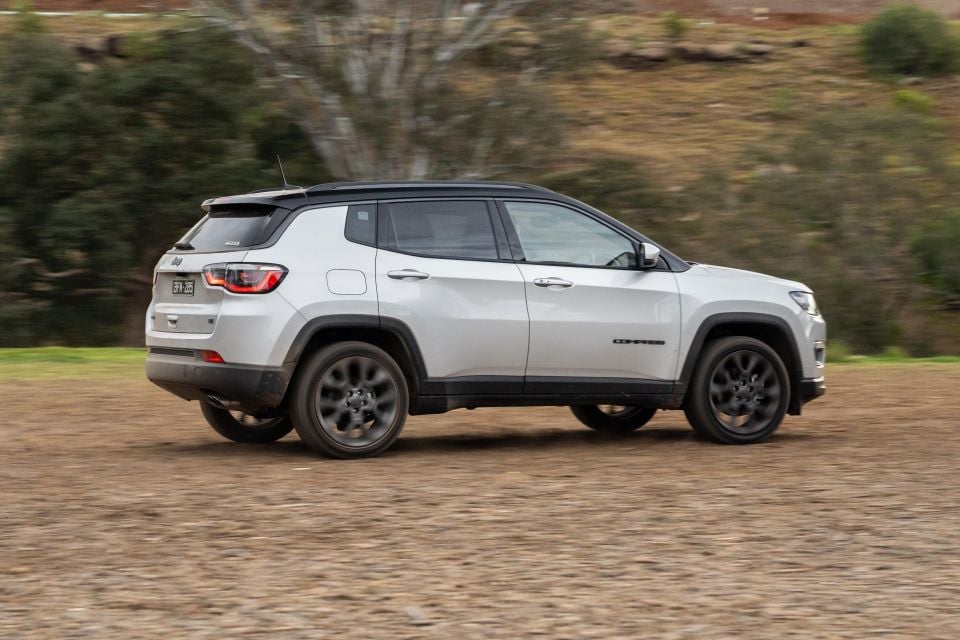
The broad spread of ratios on offer means you’re never far from the car’s torque band, and the transmission is smart enough to pick a gear and stick with it rather than constantly hunting around. Sounds simple, but it’s not always the case with eight- and nine-speeders.
With that said, it can occasionally be caught when you need performance in a hurry, needing to drop one, two, and three gears before it’s able to really get up and go. There’s also occasional hesitancy between first and second gear on light throttle inputs.
The engine is smooth and quiet, and never gets too vocal when you really stick the boot in. It’s relatively refined throughout the rev range and doesn’t feel thrashy or coarse.
Like most of its naturally-aspirated rivals though, this isn’t a performance car.
On the move the Compass feels bigger and more substantial than some other compact crossovers. The steering is heavier and slower than in some city-oriented crossovers – although it’s still easy to manoeuvre in tight city lanes and parking garages, there’s a slightly elastic feeling as you wind on lock.
With parking sensors at both ends, a tall driving position, and a (mostly) crisp reversing camera, there’s no excuse for kerbed wheels and dinged bumpers.
The ride is a mixed bag. The Compass is really smooth over big speed bumps and undulating roads, soaking them up in one neat movement, but the bigger wheels on our S-Limited make it feel busy over smaller lumps, bumps, and potholes.
It’s a natural highway cruiser, with a relaxed demeanour and quiet cabin combining at speed to make the Compass feel all grown up.
Whether owners will ever test their Jeep city crossover off-road remains to be seen, but the Compass genuinely does offer more capability than its rivals, even in S-Limited guise.
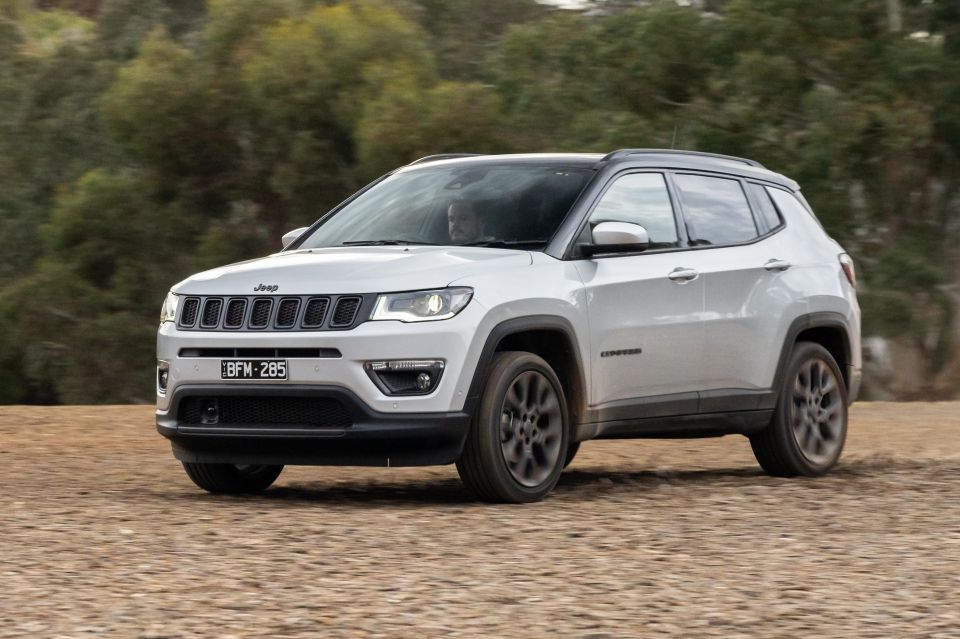
In the course of a head-to-head with the Kia Seltos, we discovered the Jeep’s all-wheel drive system is smart enough to get it up obstacles like a slippery log climb without too much trouble, something city-focused rivals can’t match.
A cursory glance at the front and rear bumpers reveals some thought has been given to approach and departure angles, which could come in handy on the way to a tough-to-reach campsite – or parking spot at Woolies. Ground clearance is 212mm in the S-Limited, while the more off-road focused Trailhawk has 225mm.
The Compass is backed by a five-year, unlimited-kilometre warranty.
Maintenance is required every 12 months or 12,000km, and capped-price services cost $399 for the first five years. That equates to $1995 over five years.
You bought a Jeep? The ads are back, but the brand isn’t quite there yet. After hitting a peak of 30,408 sales in 2014, deliveries dropped to just 5519 in 2019.
The first pillar in the Jeep recovery plan is sorting out its customer service problems, something boss Kevin Flynn says is well underway. The second is the car you see here, the Compass – and I understand its allure. But the S-Limited isn’t the sweet spot in the range.

Although it’s short of a few luxuries, the base Night Eagle offers the same good looks and Jeep badge as the S-Limited, and the fact it’s front-wheel drive isn’t likely to hold many buyers back given these compact and mid-sized SUVs rarely leave the blacktop.
If you’re after the most Compass money can buy, the Trailhawk is uniquely off-road capable in a segment dominated by soft roaders, and not all that much more expensive than the S-Limited.
The Mazda CX-30 has a nicer interior, the Kia Seltos has a punchier turbocharged powertrain, and the Volkswagen T-Roc has a Euro-polished ride to match its Euro-polished badge – and all of them cost less.

Where expert car reviews meet expert car buying – CarExpert gives you trusted advice, personalised service and real savings on your next new car.
If you’re looking at something bigger, the Toyota RAV4 has the option of hybrid power and more spacious cabin, while the Subaru Forester majors on practicality in a way the Jeep doesn’t.
There’s an allure to the Compass, but there’s better value to be found elsewhere in the range.
Where expert car reviews meet expert car buying – CarExpert gives you trusted advice, personalised service and real savings on your next new car.
Scott Collie is an automotive journalist based in Melbourne, Australia. Scott studied journalism at RMIT University and, after a lifelong obsession with everything automotive, started covering the car industry shortly afterwards. He has a passion for travel, and is an avid Melbourne Demons supporter.


Angus MacKenzie
4 Days Ago


Paul Maric
3 Days Ago
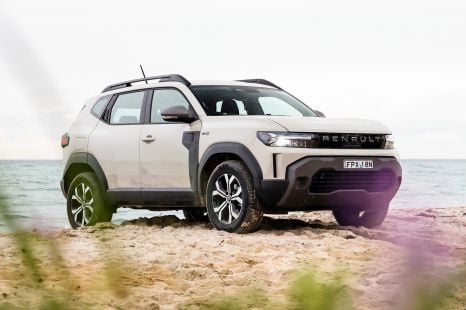

Max Davies
3 Days Ago
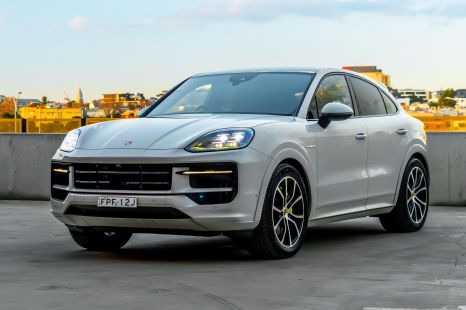

James Wong
3 Days Ago


Shane O'Donoghue
2 Days Ago
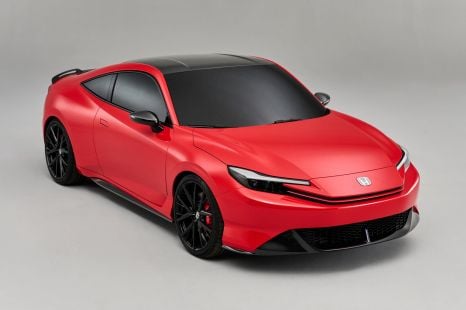

Damion Smy
1 Day Ago